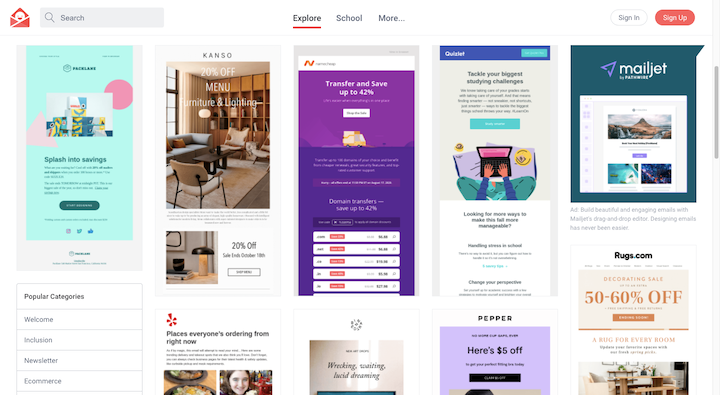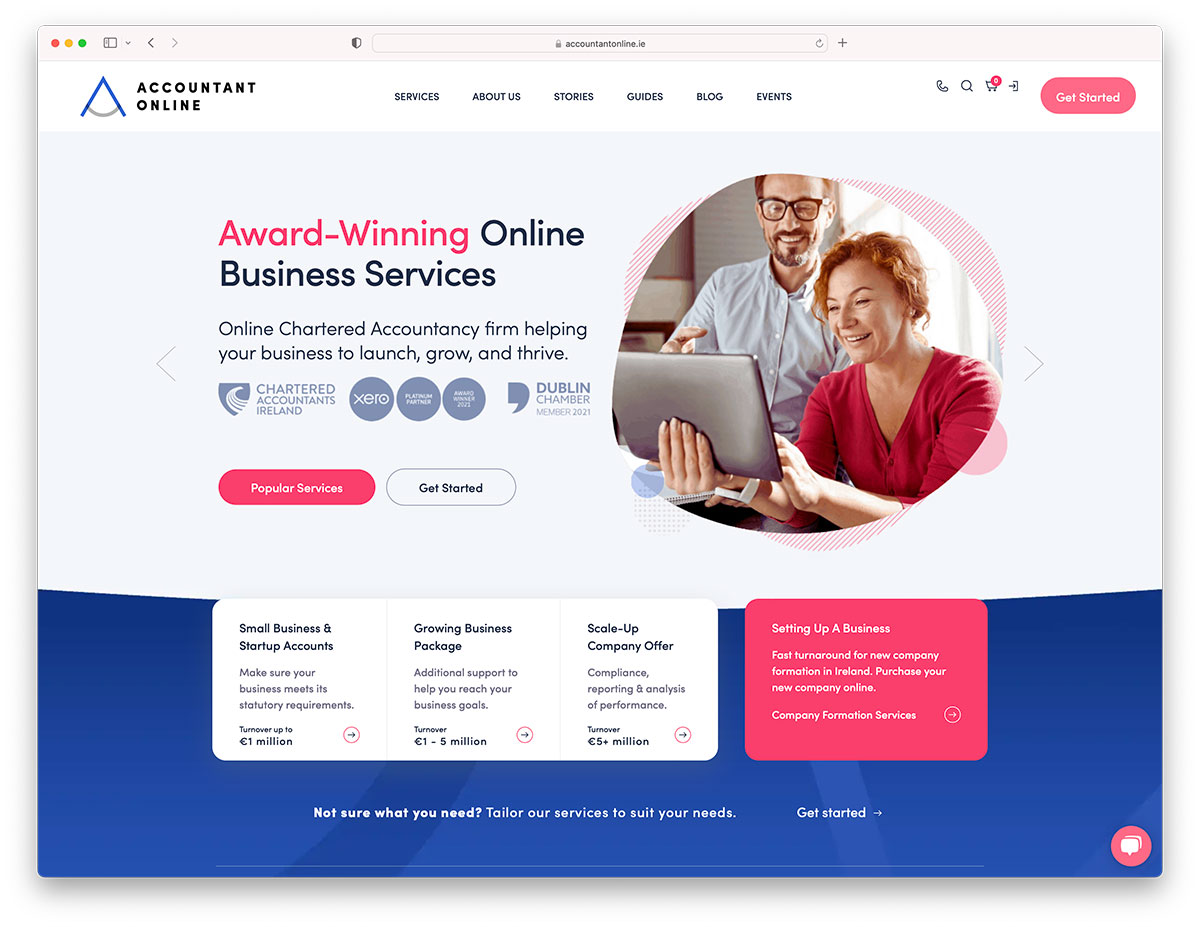The Ultimate Overview to Modern Web Site Design Trends
In the ever-evolving digital landscape, modern-day web site layout trends play a vital duty fit customer experience and engagement. From the surge of minimalist design principles that focus on simplicity to the influence of strong typography in specifying brand name identity, each element adds to a natural on-line existence. The focus on mobile-first and receptive techniques, alongside ingenious microinteractions, further boosts usability. The growing emphasis on lasting web style practices shows a dedication to environmental obligation. These trends collectively raise important concerns about the future of reliable internet style and what it implies for consumers and companies alike.
Minimalist Style Principles
Minimalist design concepts emphasize the idea that much less is a lot more, promoting for simplicity and functionality in visual interaction. This method strips away unneeded components, concentrating instead on necessary components that convey the desired message efficiently. By prioritizing quality, minimalist layout enhances user experience, permitting site visitors to browse internet sites easily.
Core tenets of minimal layout include using adequate white room, which produces a feeling of balance and company. This unfavorable area not only guides the customer's focus to crucial elements yet likewise cultivates a calming visual environment. Furthermore, a minimal shade combination is typically employed, utilizing single schemes or soft shades to keep aesthetic communication and avoid frustrating the user.
Typography plays an important role in minimalist layout, where legible fonts are selected for their simplicity and efficiency in interacting material. Pictures and graphics are made use of moderately, making sure that they offer an objective instead of sidetrack from the general message. Ultimately, minimalist design concepts cultivate a focused environment that urges users to involve with the material, improving the total performance of modern-day web site design. This fad reflects a growing recognition for thoughtful, user-centric appearances in electronic spaces.
Bold Typography Options
Welcoming vibrant typography options has actually become a specifying attribute of modern-day website style, as it efficiently catches focus and shares solid messaging. Developers are significantly making use of typography not simply as a functional aspect yet as a crucial visual element that enhances the overall visual and user experience.

Additionally, the juxtaposition of strong typography with minimal layout principles permits striking contrasts, improving readability while preserving aesthetic appeal. The use of whitespace around strong text additionally stresses its value, guaranteeing that the message reverberates with the target market.
As electronic landscapes become a lot more affordable, leveraging vibrant typography makes it possible for brands to differentiate themselves and leave a long lasting impact. The mindful selection of typefaces and their application can stimulate feelings, develop tone, and drive activity, making strong typography an indispensable device in modern site design. Inevitably, it is an effective way to boost storytelling and make sure that key messages are not only seen however likewise felt.
Responsive and Mobile-first Layout
Receptive and mobile-first style has actually become an essential principle in modern web site advancement, reflecting the raising dependence on mobile phones for accessing on the internet content. As customer behavior changes towards mobile surfing, developers should prioritize developing experiences that adapt perfectly throughout various screen sizes and resolutions.
A receptive layout ensures that a website instantly readjusts its layout, pictures, and capability based on the device being used. Mobile-first layout advocates for creating internet sites originally for smaller sized displays, ultimately scaling up to larger displays.
Carrying out responsive and mobile-first concepts not just accommodates user preferences but additionally straightens with seo (SEARCH ENGINE OPTIMIZATION) methods. Significant online search engine, like Google, focus on mobile-friendly internet sites in their rankings, making it imperative for services to embrace these layout strategies. In an affordable electronic landscape, accepting responsive and mobile-first layout is not simply an alternative; it is important for guaranteeing availability and interaction with a diverse audience.
Engaging Microinteractions
Microinteractions play a crucial function in enhancing individual engagement and total website experience, especially in the context of mobile-first and responsive design. These subtle style aspects supply prompt responses to users, making interactions extra enjoyable and instinctive. Examples consist of switch computer animations, notice signals, and loading signs, which not only overview customers but additionally create a feeling of connection with the user interface.
Integrating engaging microinteractions can considerably improve usability by reducing cognitive tons. When individuals obtain acoustic or visual responses upon carrying out activities, such as clicking a button or sending a form, they really feel much more positive in their selections. This promotes a smoother navigation experience, inevitably increasing user retention.

As site layout fads continue to develop, the importance of microinteractions can not be overemphasized. They work as the refined yet powerful touchpoints that transform here are the findings regular communications right into remarkable experiences, moved here consequently raising the overall efficiency of contemporary website design.
Sustainable Website Design Practices
Lasting website design practices are becoming increasingly crucial as the electronic landscape grows and ecological concerns rise. Designers and designers are recognizing their responsibility to create sites that not just offer user requirements but also lessen ecological effect. This approach includes several essential methods.
First of all, maximizing power consumption is critical. Sites must be created to pack rapidly and efficiently, which lowers server energy use and enhances user experience. Methods such as image compression, minimizing HTTP demands, and utilizing modern coding practices add significantly to this objective.
Second of all, choosing eco-friendly hosting companies is vital - website design. Numerous holding business are now powered by sustainable energy resources, making it possible for web sites to run in a more lasting manner. This option shows a commitment to minimizing carbon footprints
Moreover, embracing a minimal style can improve sustainability. Fewer components on a web page cause much less information transfer, which not just accelerates loading times but likewise preserves sources.
Finally, promoting digital ease of access ensures that web sites reach a larger target market without unnecessary bloat, aligning individual experience with environmental responsibility. By incorporating these lasting techniques, web developers can contribute favorably to both find more customer interaction and the planet's wellness.
Conclusion
In summary, modern internet site layout trends highlight the combination of minimal principles, vibrant typography, and responsive style to improve customer experience. Involving microinteractions add to remarkable communications, while sustainable methods promote for eco aware growth. Jointly, these aspects not just elevate aesthetic allure but additionally boost capability, ensuring that sites are both visually striking and user-friendly. Taking on these trends is important for creating impactful digital experiences that resonate with individuals in a significantly affordable online landscape.
In the ever-evolving electronic landscape, modern web site design fads play a crucial role in forming user experience and engagement. By focusing on clarity, minimalist style boosts user experience, permitting site visitors to browse websites effortlessly.
Ultimately, minimalist layout principles grow a concentrated atmosphere that urges individuals to involve with the material, boosting the general performance of modern-day website style.Microinteractions play a critical role in enhancing customer engagement and total site experience, particularly in the context of mobile-first and responsive layout.In recap, modern web site style patterns emphasize the assimilation of minimal principles, vibrant typography, and responsive layout to enhance individual experience.